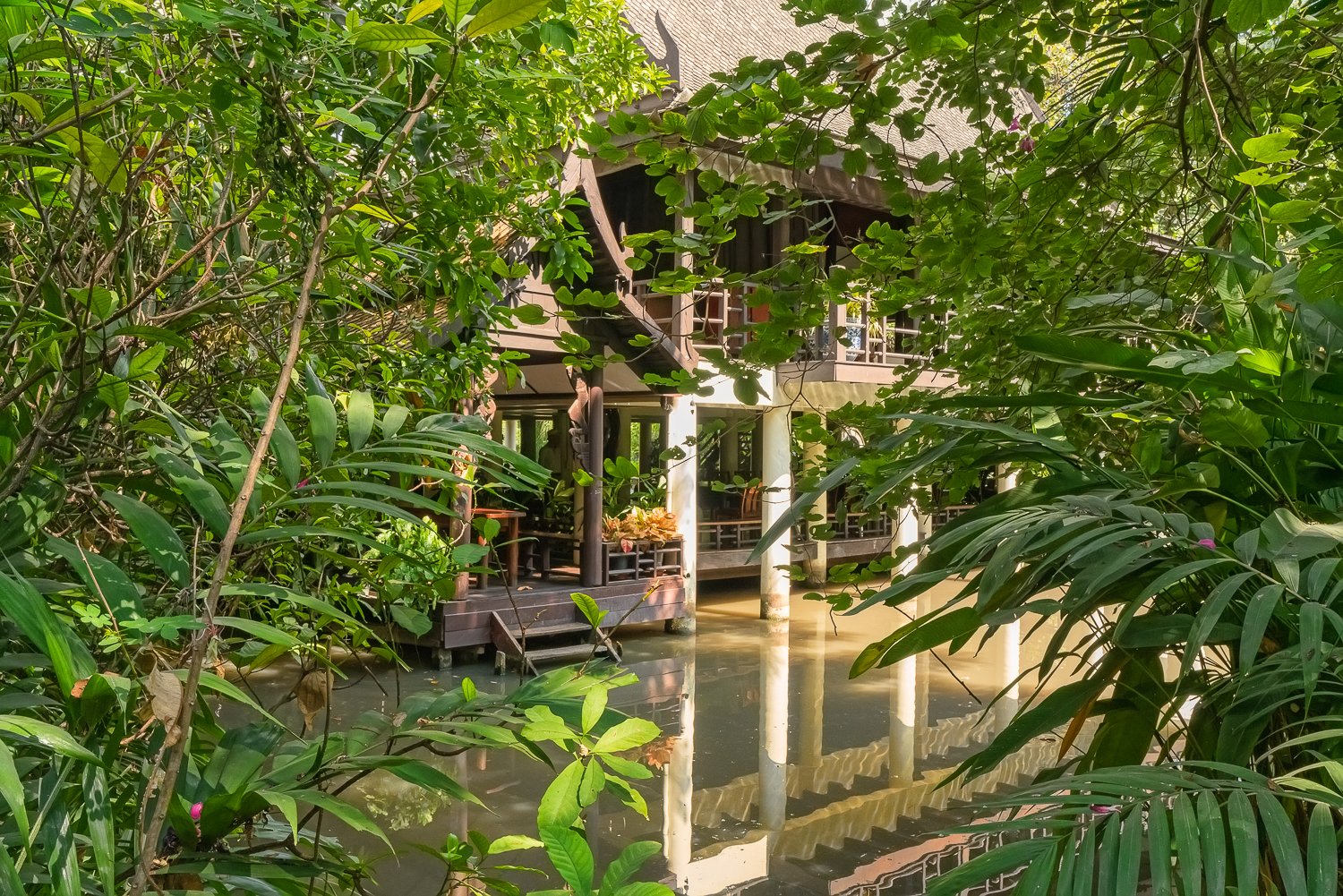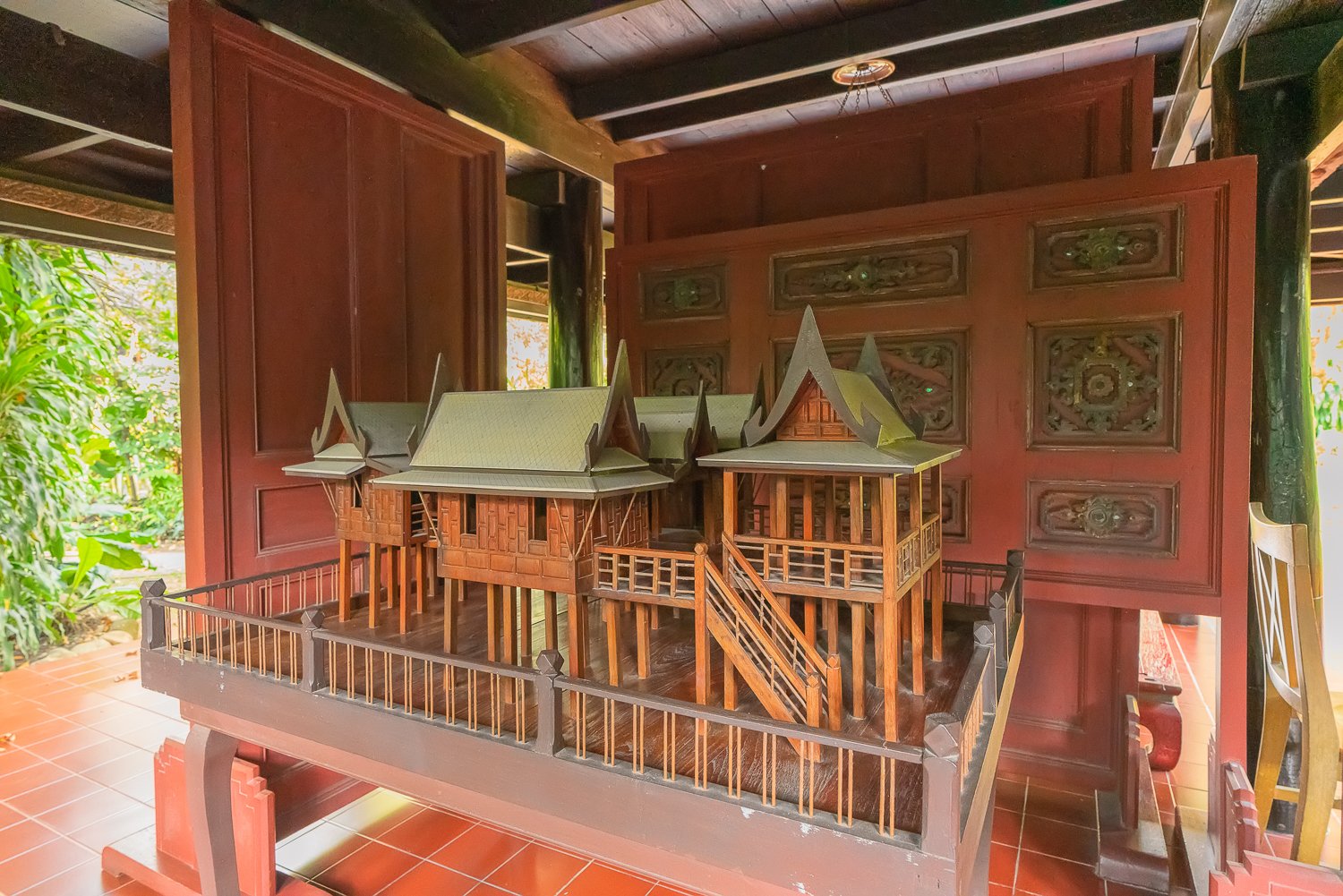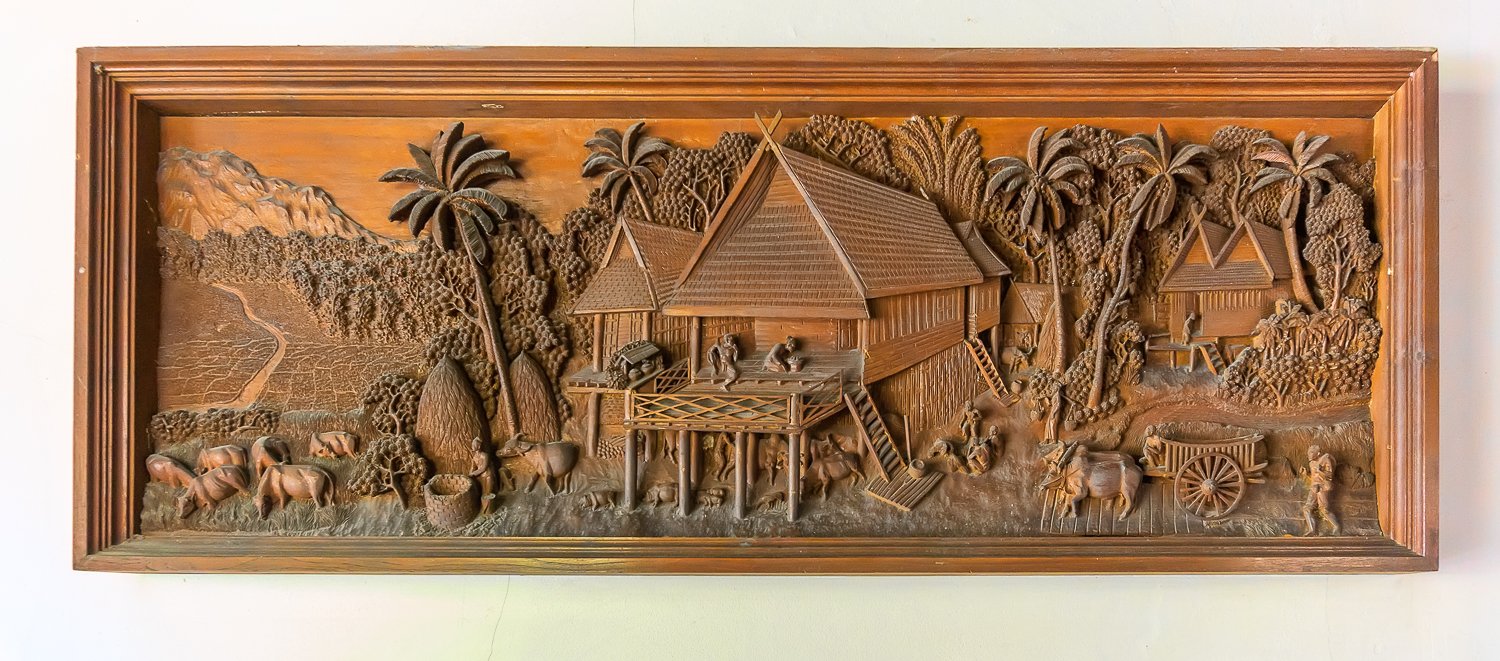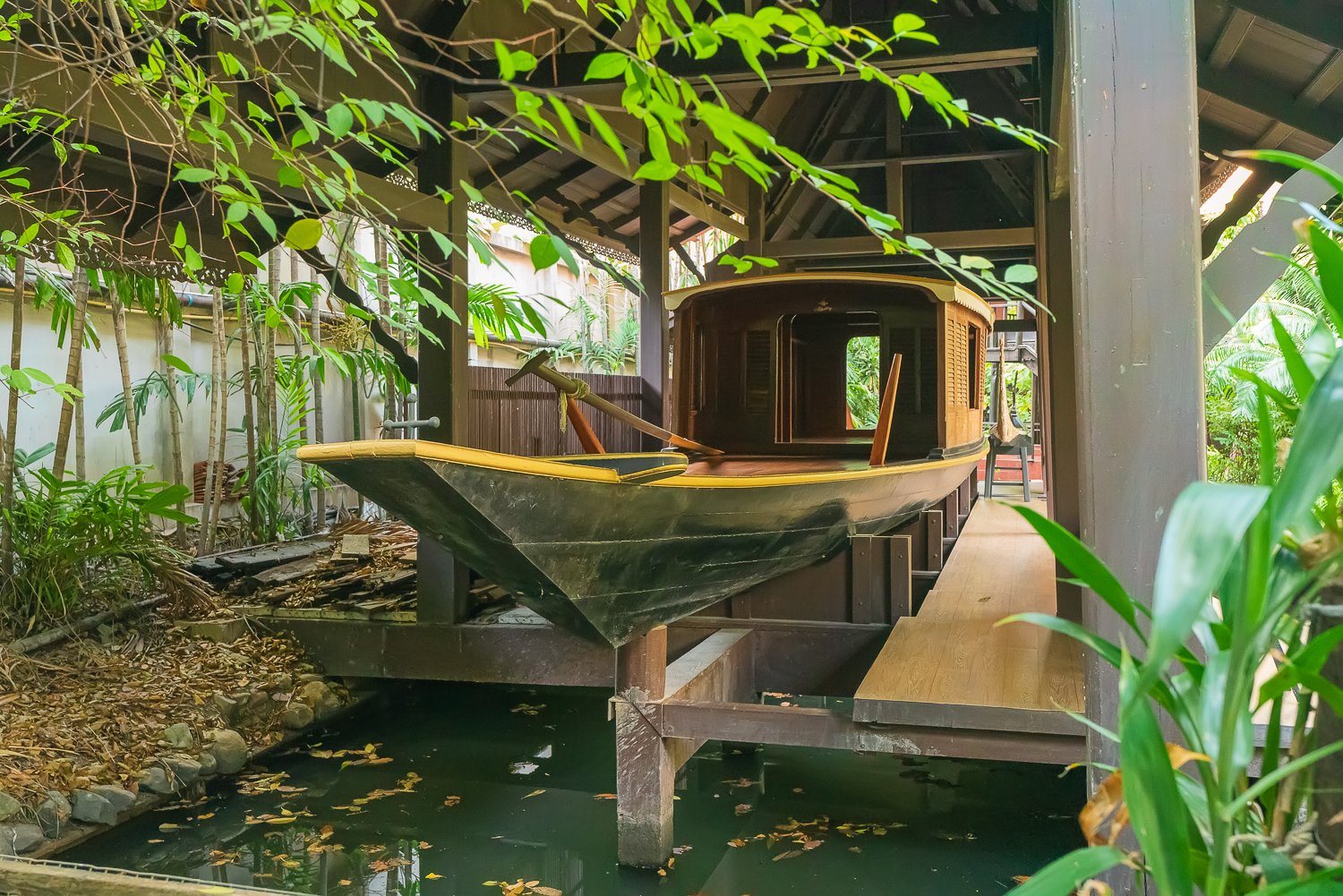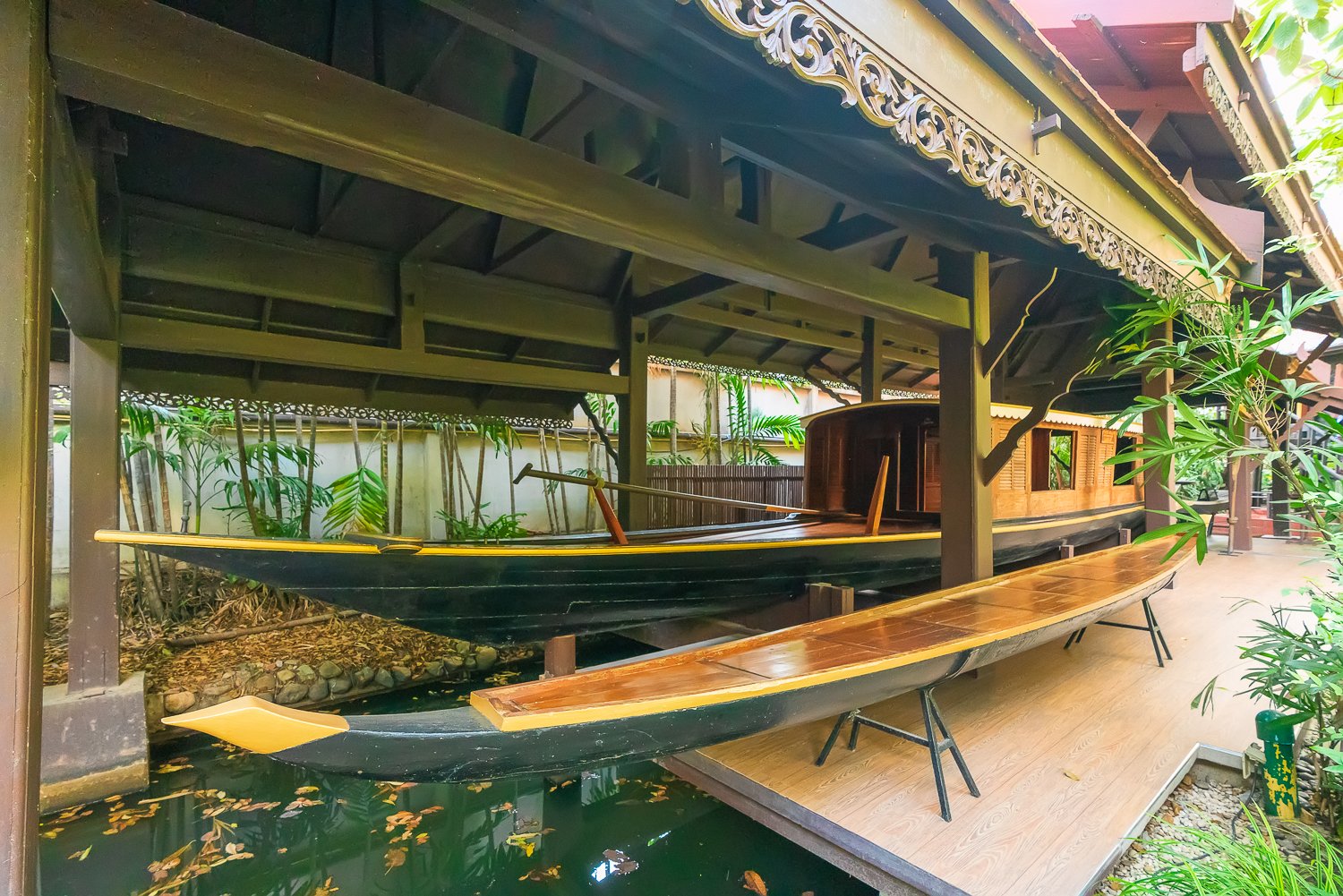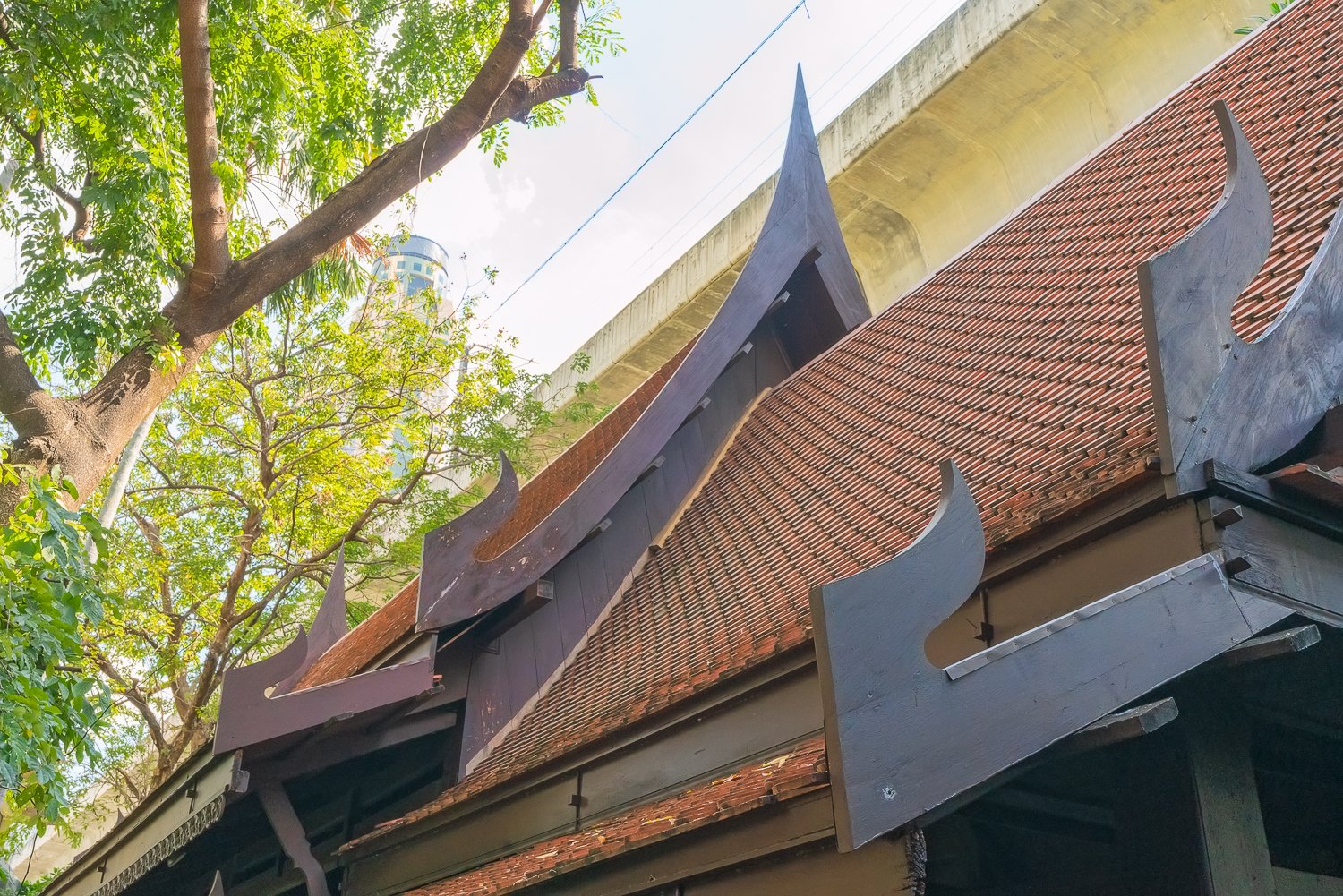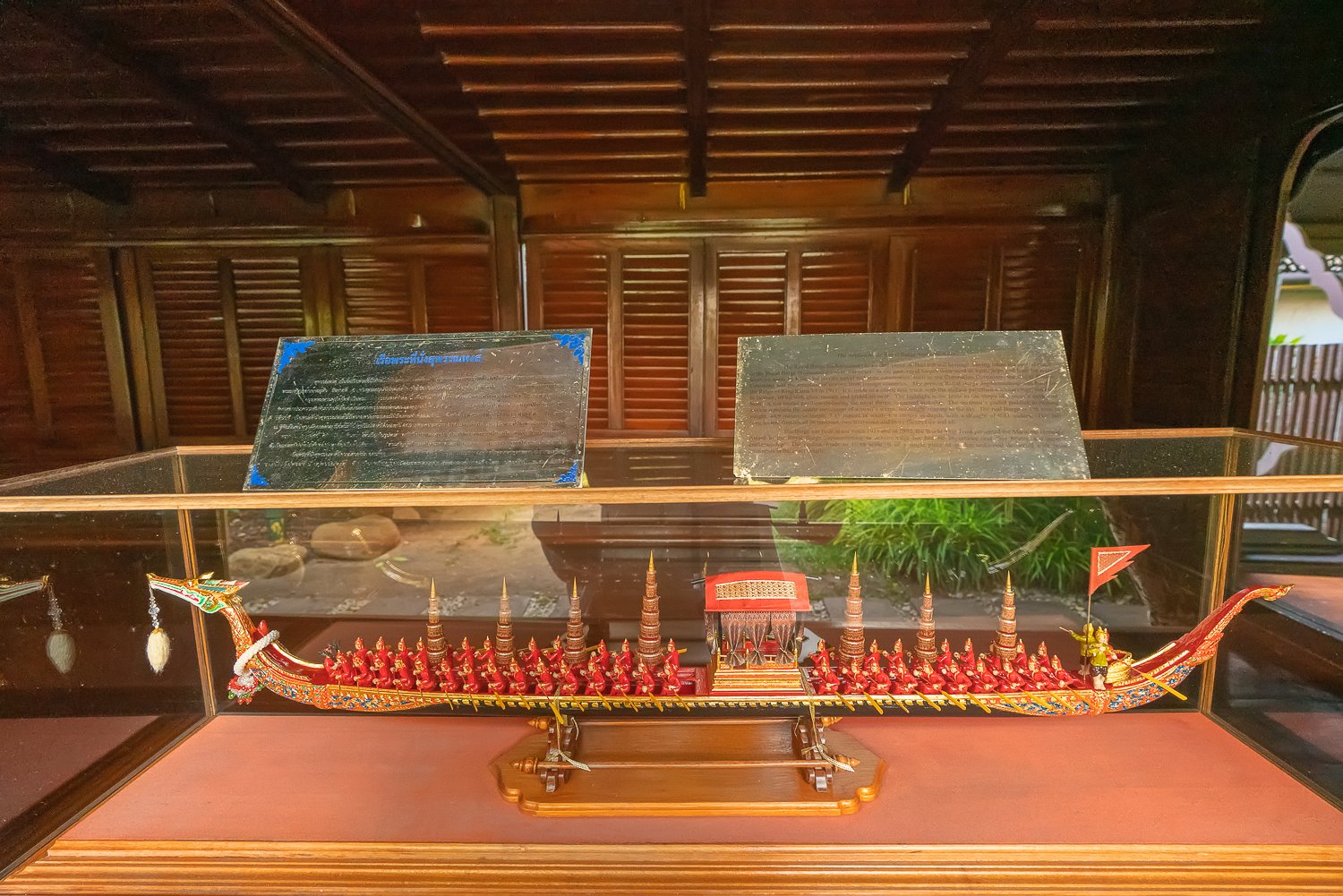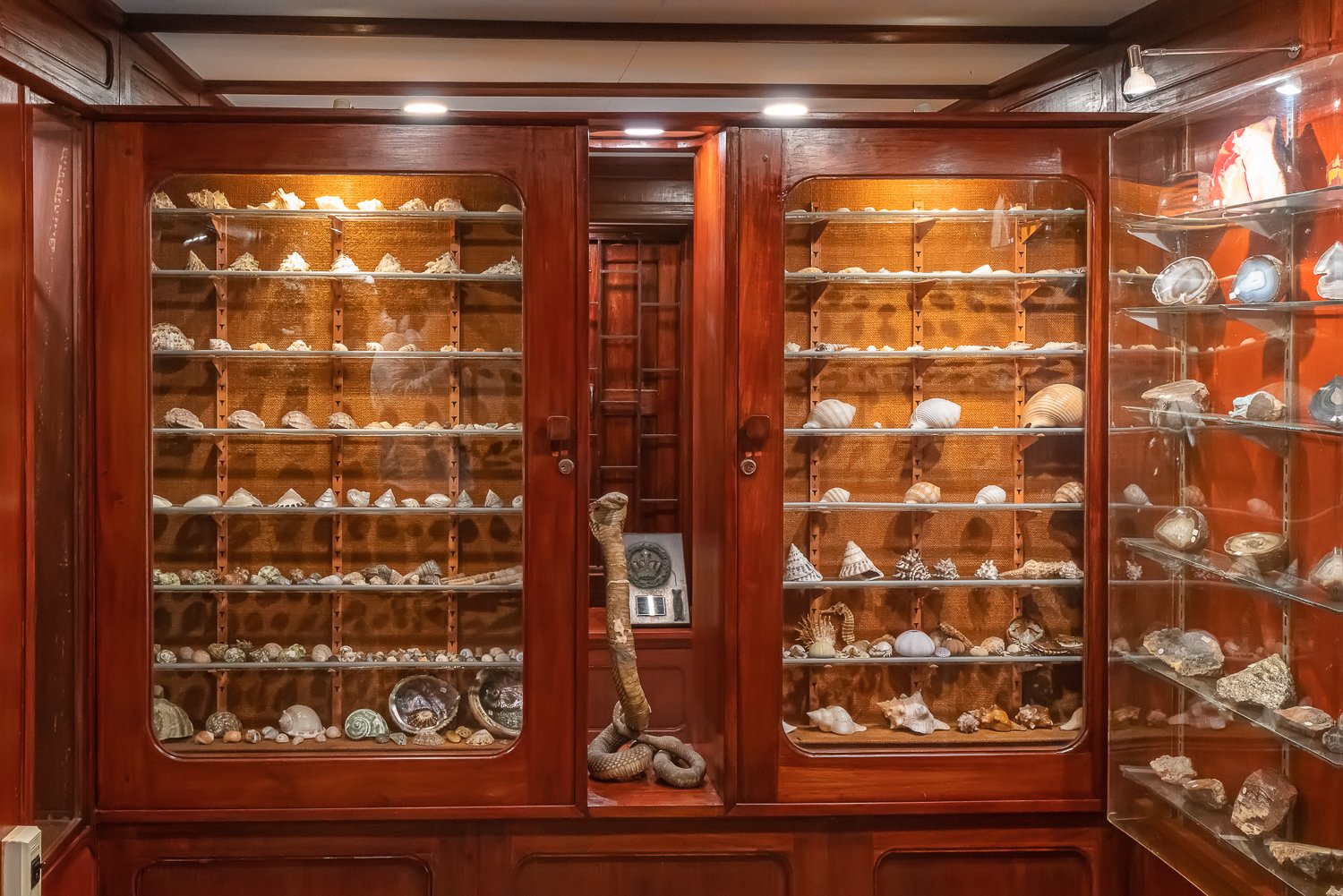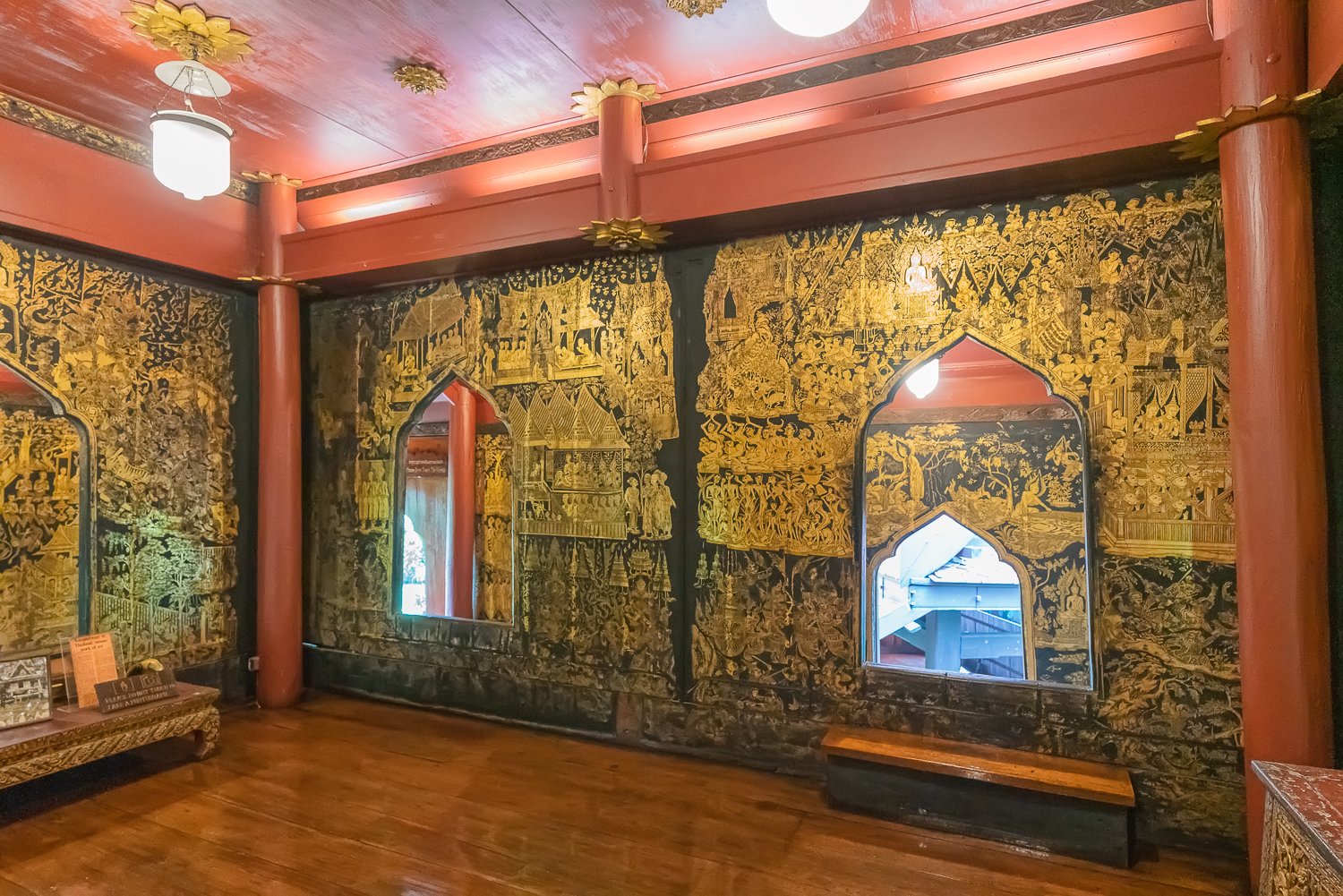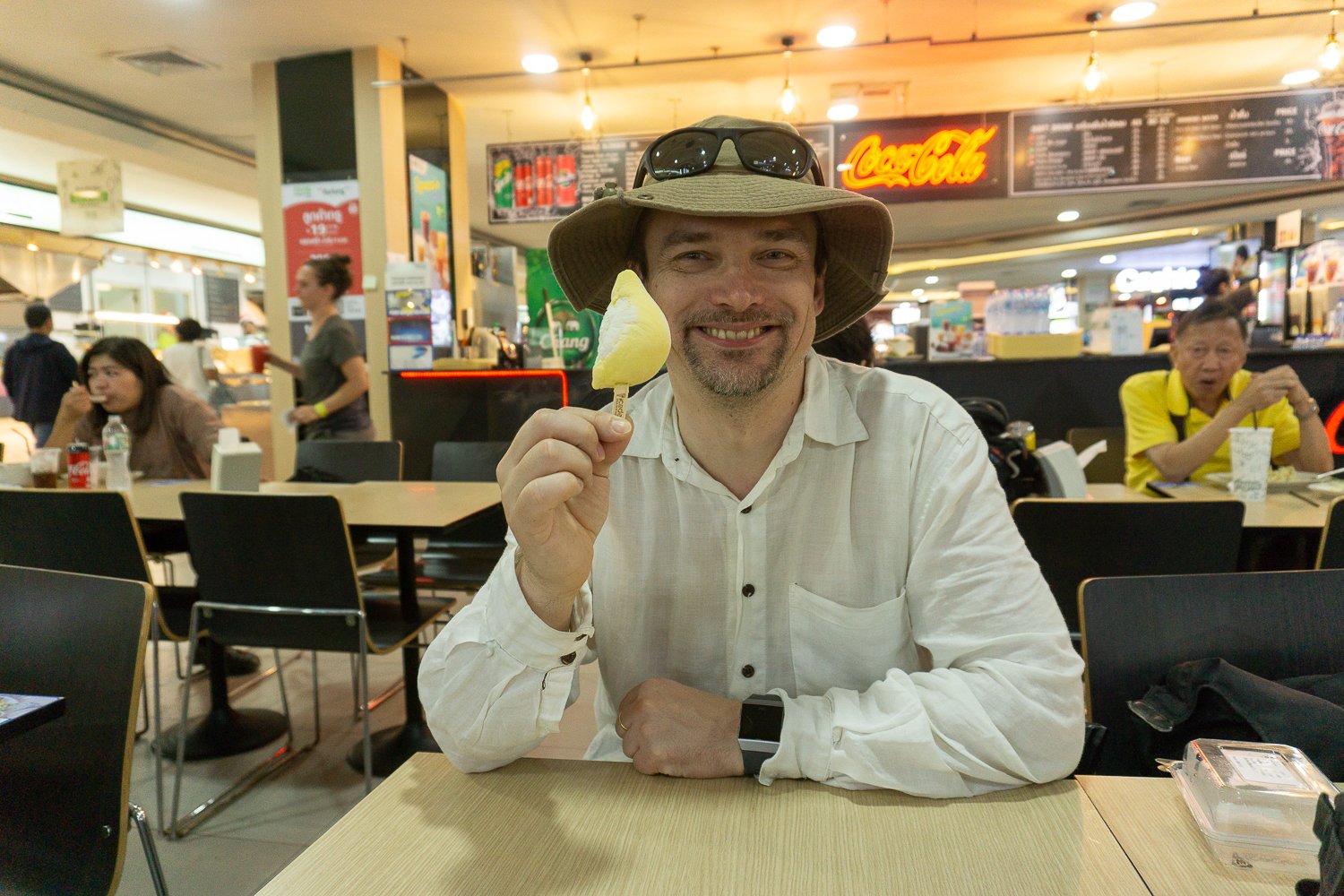The reason why thousands of tourists and believers visit Wat Pho every day is The Wihan Phranorn containing the 45m long and 15 m tall (150 x 50 feet) gilded statue of the famous reclining Buddha. It was constructed in the reign of Rama III emulating the Ayutthaya style. The image of the reclining Buddha, with his head resting on his right hand, represents the entry of Buddha into Nirvana and the end of all reincarnations. It is made of a brick core covered with plaster and finished in gold leaf. Mother-of-pearl inlay on the black soles of the statue shows 108 lakshanas, physical characteristics of the Buddha. The feet are enormous, 3 m tall and 4.5 m wide, each with a chakra depicted at the centre.
On one side of the wihan, there is a raw of 108 bronze bowls, representing the lakshanas, and believers drop a coin in every bowl for good luck (see the video clip at the end of this entry).
Powodem, dla którego tysiące turystów i wiernych codziennie odwiedza Wat Pho, jest Wihan Phranorn, w którym znajduje się pozłacany posąg słynnego leżącego Buddy o długości 45 m i wysokości 15 m. Hall ten został zbudowany za panowania Ramy III naśladując styl Ayutthaya. Wizerunek leżącego Buddy, z głową opartą na prawej ręce, przedstawia wejście Buddy w Nirwanę i koniec wszystkich reinkarnacji. Budda wykonany jest z ceglanego rdzenia pokrytego tynkiem i wykończony złotem płatkowym. Inkrustacja z masy perłowej na czarnych podeszwach posągu przedstawia 108 lakshanas, czyli fizyczne cechy Buddy. Stopy są ogromne, mają 3 m wysokości i 4,5 m szerokości, każda ma także zaznaczoną na środku czakrę.
Po jednej stronie wihanu znajduje się rząd 108 brązowych misek, reprezentujących lakshany, a wierzący wrzucają monetę do każdej miski na szczęście (zobacz wideo na końcu tego wpisu).
Phra Maha Chedi Si Rajakarn is a group of four large stupas or chedis, each 42 metres high and covered in decorative glazed tiles. They are dedicated to the first four Chakri kings. The first, in green mosaic tiles, was constructed by Rama I to house the remnants of the great Buddha from Ayuthaya. Two more were built by Rama III, one in white tiles to hold the ashes of his father Rama II and another in yellow for himself. A fourth, in blue, was built by Rama IV.
Phra Maha Chedi Si Rajakarn to grupa czterech dużych stup lub chedi, każda o wysokości 42 metrów i pokryta dekoracyjnymi glazurowanymi płytkami. Te chedi są poświęcone pierwszym czterem królom Chakri. Pierwsza, pokryta zielonymi płytkami mozaikowymi, została skonstruowana przez Ramę I, aby pomieścić szczątki Buddy przetransportowane z Ayuthayi. Dwie kolejne zostały zbudowane przez Ramę III, jedna z białych kafelków do przechowywania prochów jego ojca Ramy II, a druga dla siebie w kolorze żółtym. Czwartą, niebieską, zbudował Rama IV.
Outside the Phra Rabiang cloisters are dotted many smaller chedis, called Phra Chedi Rai. Seventy-one of these small chedis were built by Rama III, each one five metres in height. They contain the ashes of the royal family.
There are also four groups of five chedis that share a single base built by Rama I, one on each corner outside the cloister. They contain the relics of Buddha.
Na zewnątrz krużganków Phra Rabiang znajduje się wiele mniejszych chedi, zwanych Phra Chedi Rai. Siedemdziesiąt jeden takich mniejszych chedi zbudował Rama III, każda o wysokości pięciu metrów. Zawierają one prochy rodziny królewskiej.
Istnieją również cztery grupy po pięć chedi, które dzielą jedną bazę zbudowaną przez Ramę I, po jednej na każdym rogu poza krużgankiem. Zawierają one relikwie Buddy.
Pairs of stone giants guard various gateways to the compound – some of them came on ships that exported rice to China as ballast. There are many other chines statues and columns around the premises.
Pary kamiennych gigantów strzegą różnych bram do kompleksu – niektóre z nich przybyły na statkach, które eksportowały ryż do Chin jako balast. Wokół kompleksu świątynnego znajduje się także wiele innych chińskich posągów i kolumn.
Thai temples roofs (usually 3-tiered) are often decorated with gilded chofas (bird-like shapes), richly carved gables and colourful tiles. In Wat Pho everything is covered either in beautiful tiles or crystals and gold. It is glittering and glistening in the sun.
Dachy tajskich świątyń (zwykle 3-poziomowe) są często ozdobione złoconymi chofa (ozdoby kształtem przypominające ptaki), bogato rzeźbionymi szczytami i kolorowymi dachówkami. W Wat Pho wszystko jest pokryte albo ceramicznymi płytkami, albo kryształami i złotem. Cały kompleks lśni i błyszczy w słońcu.
Wat Pho is considered the first public university in Thailand. On various walls, there are illustrations related to medicine, anatomy, massage, science, art, and Buddhism.
Wat Pho jest uznawana za pierwszy publiczny uniwersytet w Tajlandii. Na różnych ścianach kompeksu znajdują się ilustracje związane z medycyną, anatomią, masażem, nauką, sztuką i buddyzmem.
Statues of the giants (you may remember them from our visit to Wat Phra Kaew) can be seen in the temple structures. They all have a grinning mouth and crocodile eyes.
Maiyarap had light purple skin. His personal magical weapon was a pipe and the mantra to hypnotize the troops. He became the king of the underwater world.
Saeng Athithas had vermillion red skin. His personal weapon was magnifying glass that could cause big fires.
Satthasun had a pale red skin, and his special ability was calling for weapon from deities.
Phaya Khon had green skin. Thee weapon of his choice was an arrow.
Posągi olbrzymów (zobacz także wpis z naszej wizyty w Wat Phra Kaew) można zobaczyć wkomponowane w budowle świątynne. Wszyscy mają uśmiechnięte usta i krokodyle oczy. Maiyarap miał jasnofioletową skórę. Jego osobistą magiczną bronią była mantra do hipnotyzowania żołnierzy. Został on królem podwodnego świata.
Saeng Athithas miał cynobrowo zaczerwienioną skórę. Jego osobistą bronią było szkło powiększające, które mogło wywoływać wielkie pożary.
Satthasun miał bladoczerwoną skórę, a jego specjalną zdolnością była umiejętność wołania o broń od lokalnych bóstw.
Phaya Khon miała zieloną skórę. Wybraną przez niego bronią była strzała.


























































































































































